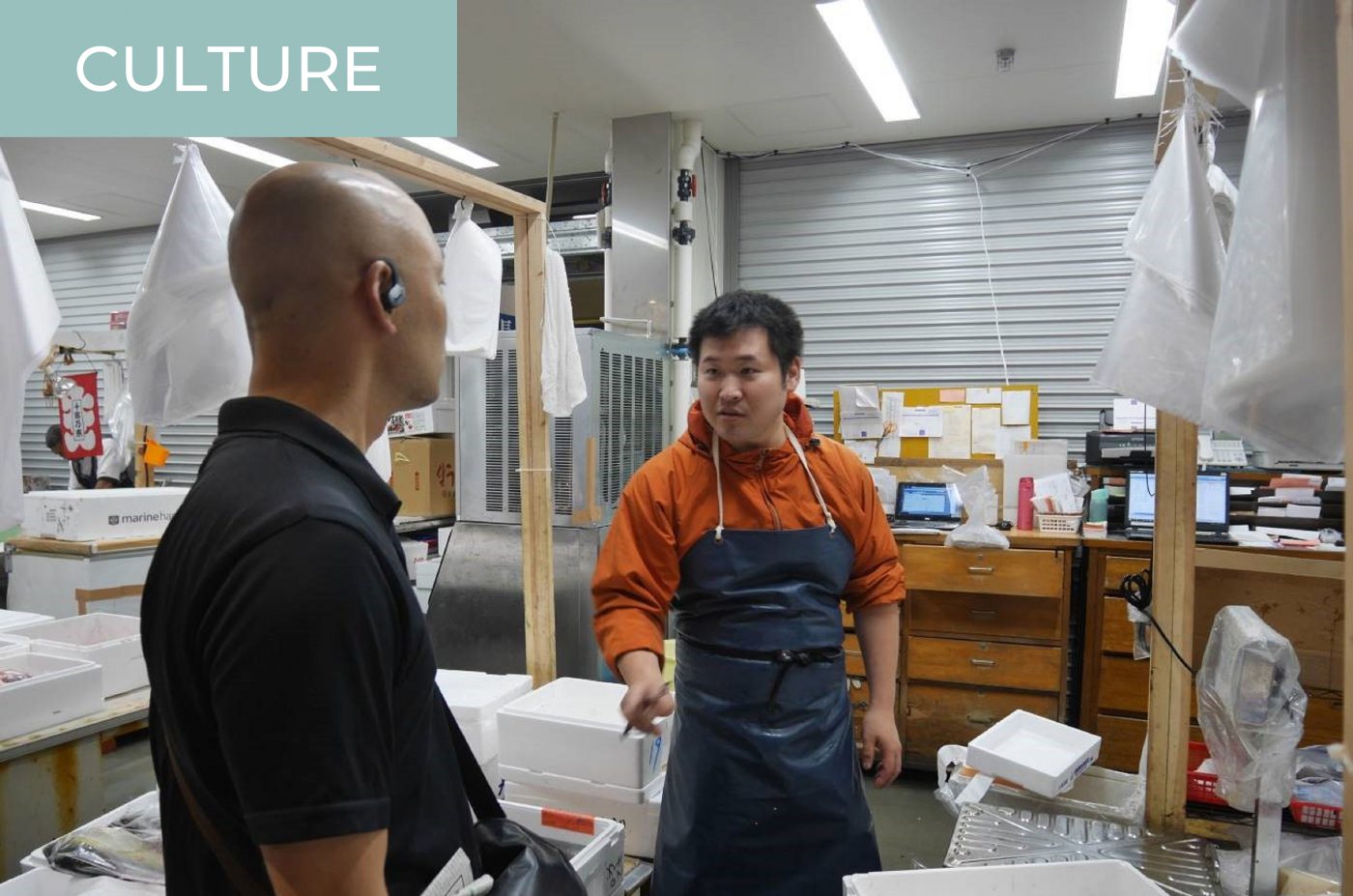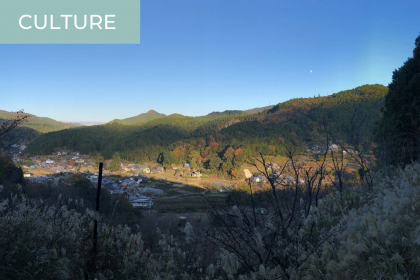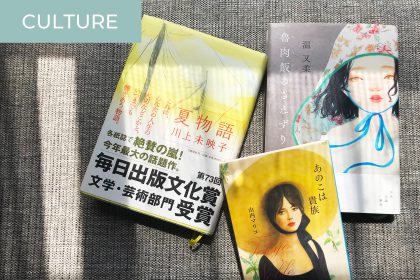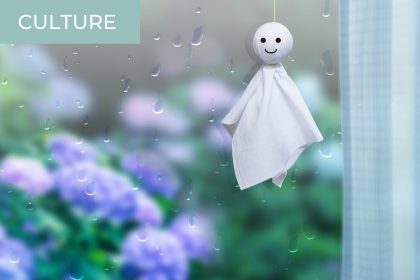In the fall of 2018, the world-famous Tsukiji Inner Market shut down permanently, and all of its primary activity was relocated to a brand-new facility in Toyosu on the opposite side of Tokyo bay.
The new Toyosu Fish Market is pristine and efficient; however, most will agree that it lacks the rustic charm of the original. But if you look beneath the gloss and sheen of the newly constructed facility, you’ll find that the spirit of the original Tsukiji Fish Market lives on in the hardworking merchants, wholesalers, and restaurant owners who ensure that Tokyo residents and tourists alike can enjoy some of the world’s most delicious seafood.
So how does your favorite seafood make it from sea to shop? Read on for an exclusive, behind-the-scenes look as we join Tokyo restaurateur Nobutaka Tsuchida on one of his daily excursions to the market.
※ This article was originally published in July 2019 on Tadaima Japan (Kokoro Media’s ancestor website).
Meet Nobutaka Tsuchida

Tsuchida plays the dual role of owner and chef of Gyokai Nonobu, a seafood restaurant in Tokyo’s Koenji district. Tsuchida’s vision is to bring the art of being a chef back to its essence by getting involved in every aspect of the culinary process. A big part of this is eliminating middlemen by making daily trips across the city to the Toyosu Fish Market, where he can personally select the seafood he prepares and serves.
This is a much more complex affair than simply strolling through the bustling isles of the market and picking out the best of the daily catch. Relationships are key to getting the best products at the best prices—benefits that Tsuchida takes pride in sharing with his customers.
Thanks to Tsuchida and his network, my colleagues and I were able to tag along for a morning of fish mongering. What follows is a glimpse into the fascinating world of the fishing industry.
8:00 a.m.: The Auction Floor
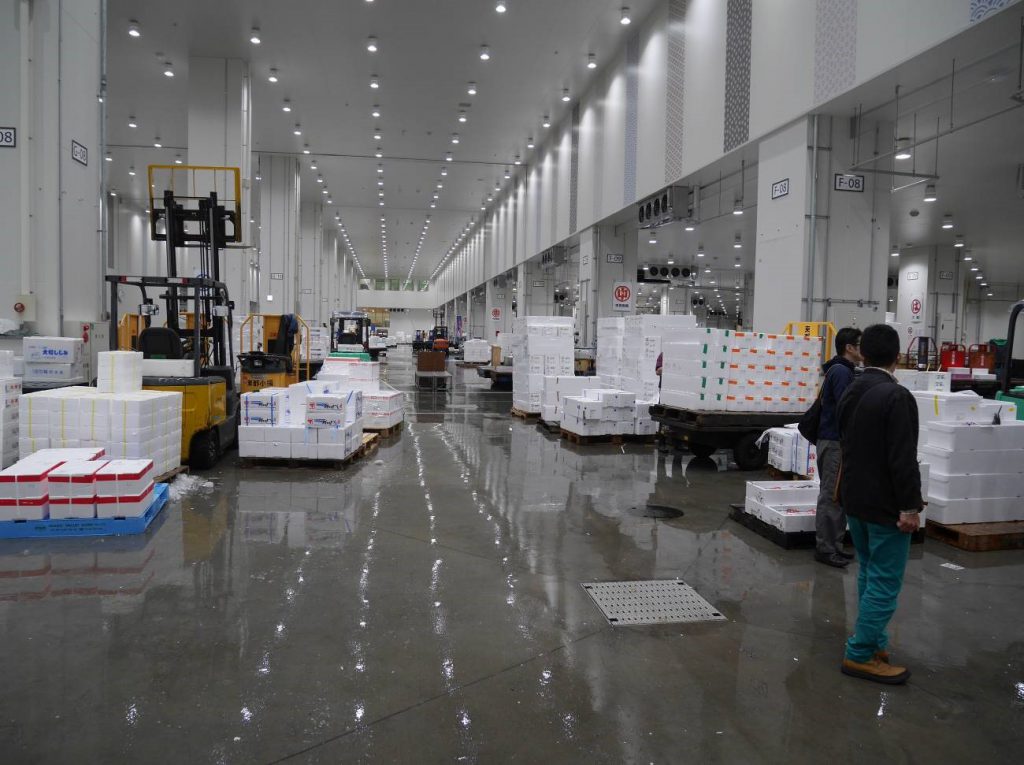
While Tokyo’s world-famous tuna auctions take place as early as 5:00 a.m., Tsuchida’s work begins several hours later. He eagerly greets me and my colleagues just before 8:00 a.m. at Shijo-mae Station and we quickly enter the market via the same entrance that tourists use. Tsuchida moves at a brisk pace, indirectly signaling that he’s operating on a tight schedule.
After a quick exchange of nods and greetings with a security guard, we are quickly whisked into an “Authorized Personnel Only” area, and we soon find ourselves standing in the middle of the vast warehouse-like structure of the Fish Wholesale Market Building, where those famous auctions were held hours ago. Tsuchida informs us that after the auctions are over, this area is used for bulk purchasing. This is where supermarkets and large restaurants typically make their purchases.
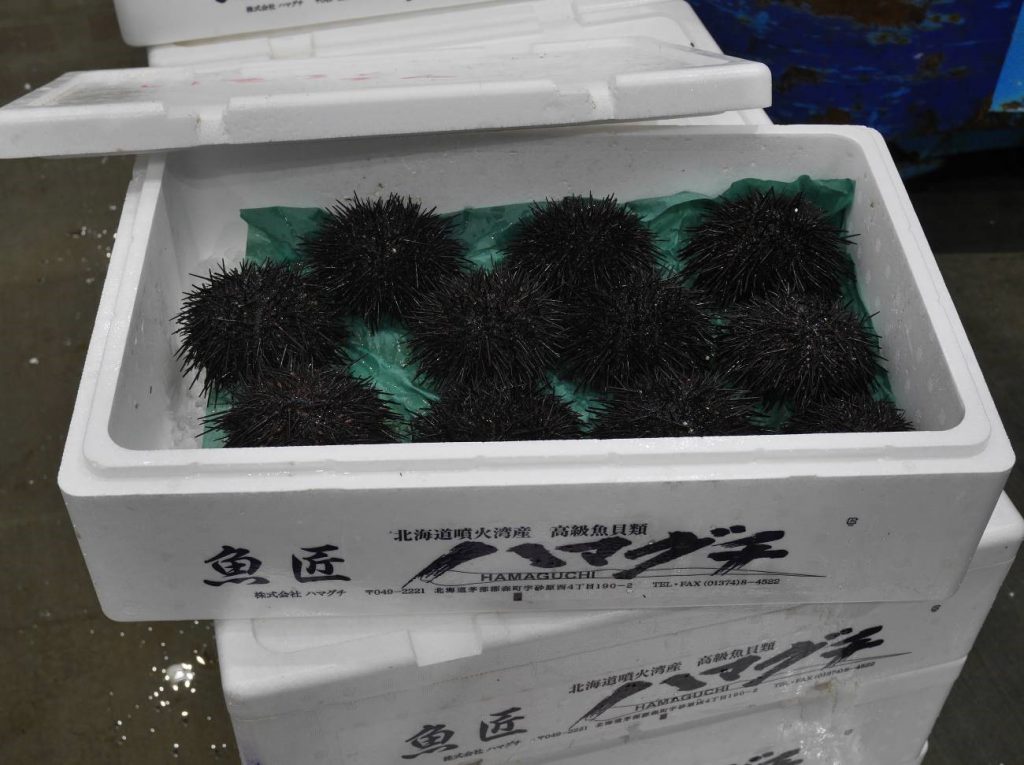
Although Tsuchida doesn’t represent one of the big chains, thanks to his network, he’s able to make his first purchases for the day here. He then swiftly heads deeper into the market, a place that more closely resembles the vibe of the former Tsukiji location.
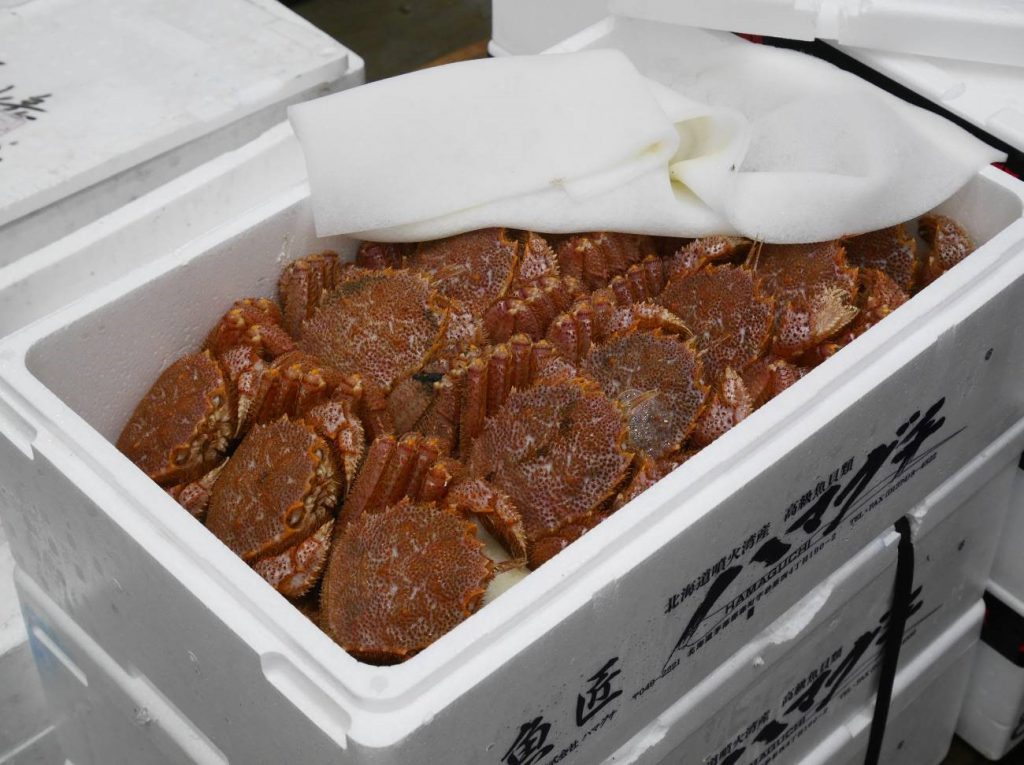
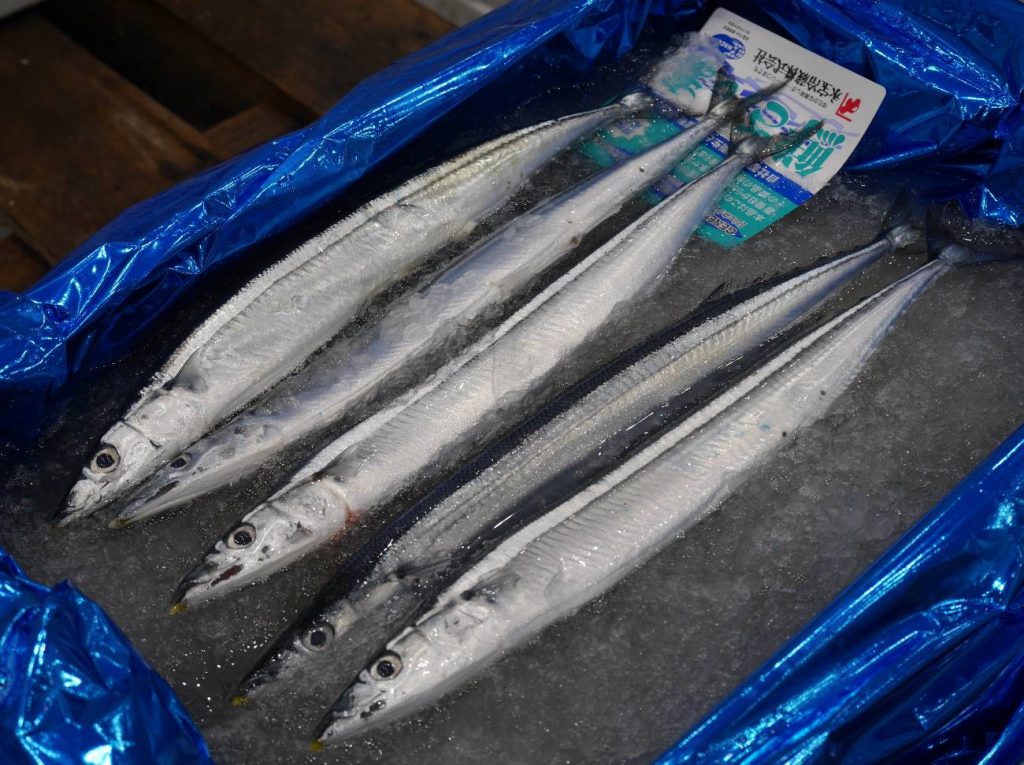
8:25 a.m.: The Heart of the Market
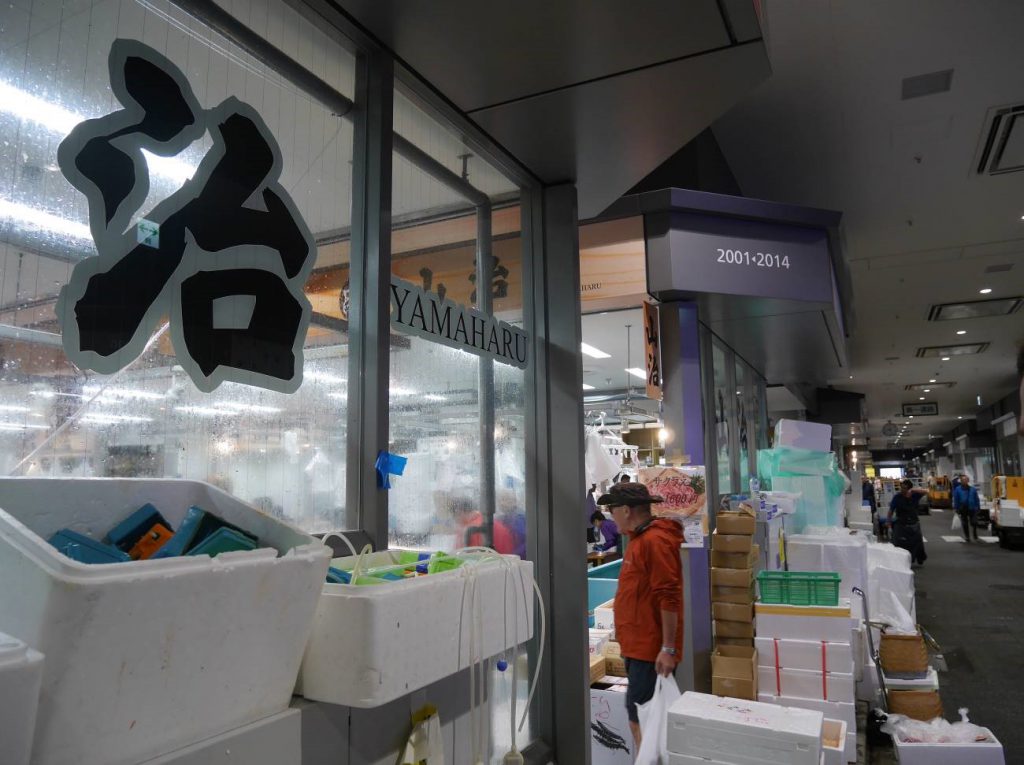
As we forge deep into the concrete caverns of the main market, officially known as the Fish Intermediate Wholesale Market Building, the spirit of Tsukiji permeates the air. “The facility might be prettier and more modern, but the people are the same as before. Overall, it still feels like Tsukiji,” Tsuchida explains.

Indeed, while the structure is hypermodern, the shop signs and piles of Styrofoam containers and wooden pallets all serve as reminders of what once was. Watching where you step is as crucial as ever before. Turret trucks speed by at every isle intersection and the drivers won’t tolerate a wayward pedestrian for a second.
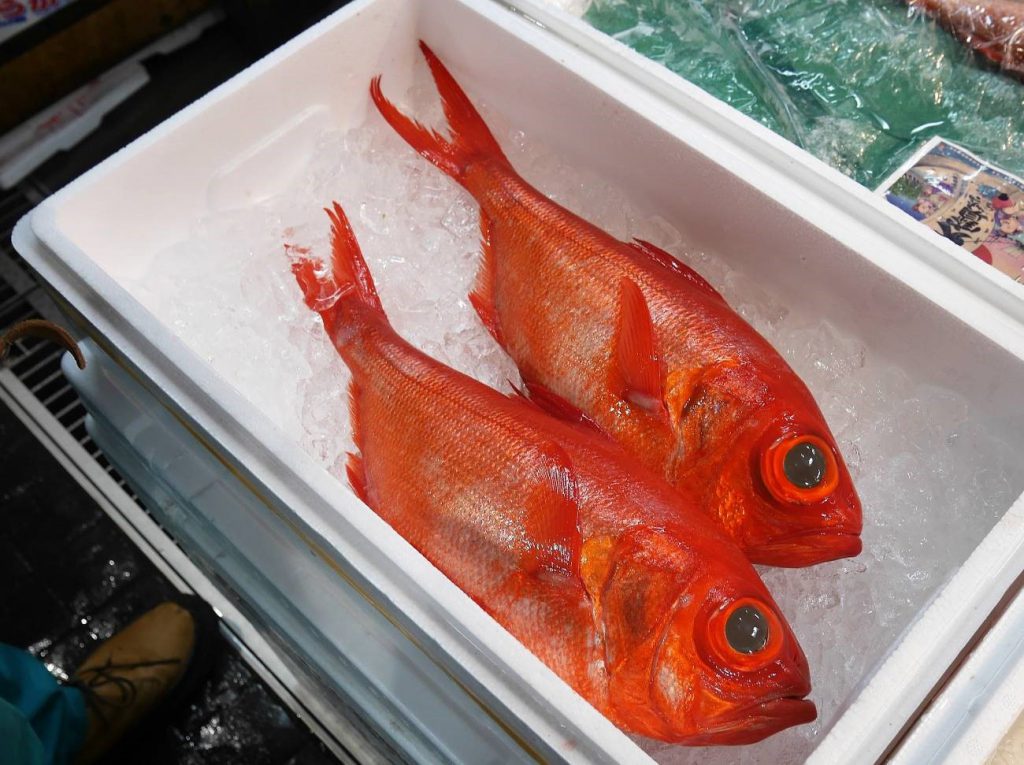
The first thing Tsuchida does upon entering the intermediate wholesaler area is pay for his prior purchases. From here on out he darts around the market from shop to shop, making deals with intermediate wholesalers on all kinds of seafood including sea urchin, oysters, and a variety of seasonal fish. The market is filled with countless other restaurant and shop owners echoing this process.
It was during this time that I could truly see the power of Tsuchida’s network. At each intermediate wholesaler we visited, my colleagues and I were greeted with warm smiles and friendly small talk (and on one occasion, complimentary coffee). One particular fishmonger enthusiastically demonstrated the process of ikejime, a 350-year-old Japanese technique of using a metal prod to rapidly destroy a fish’s nervous system. This ensures the highest quality fish meat by reducing muscular reaction to stress. The process may sound cruel, and watching it firsthand certainly isn’t for the squeamish, but ironically ikejime is the most humane way to slaughter a fish.


9:30 a.m. Loading Up
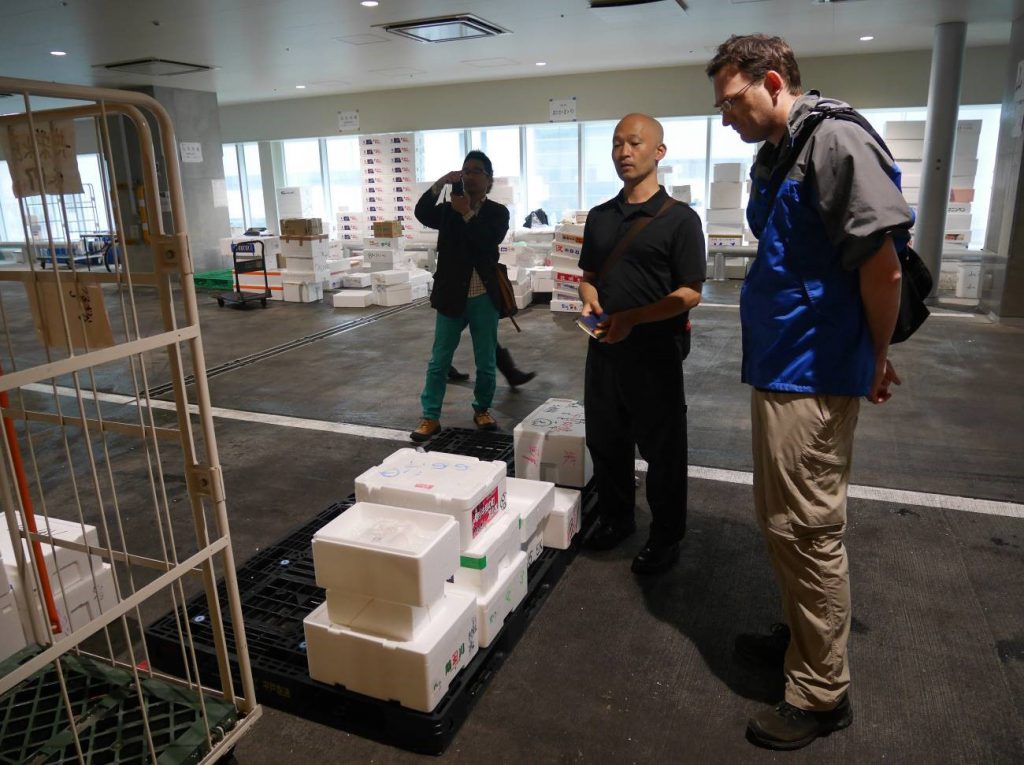
After Tsuchida makes his final purchases, we make our way out of the Intermediate Wholesale Market and pass through the Uogashi Yokocho Market which is filled with ingredients, prepared food, cooking utensils, and souvenirs. Unlike the previous locations, this market is open to the public.
However, it wasn’t long until we were once again slipping behind the scenes in order to reach Tsuchida’s rented loading bay, where we find everything he ordered, neatly arranged on a cart. Finally, our pace slows to a stop—all that was left to do was to wait on the delivery truck that would pick up Tsuchida’s purchases and deliver them to his Koenji restaurant.

After that, if all goes well, Tsuchida should have time for a lunch break and his own commute back to Koenji. Then it’s time to start turning his fresh catch into cuisine and prepare his shop to open in time to serve his eager customers dinner.
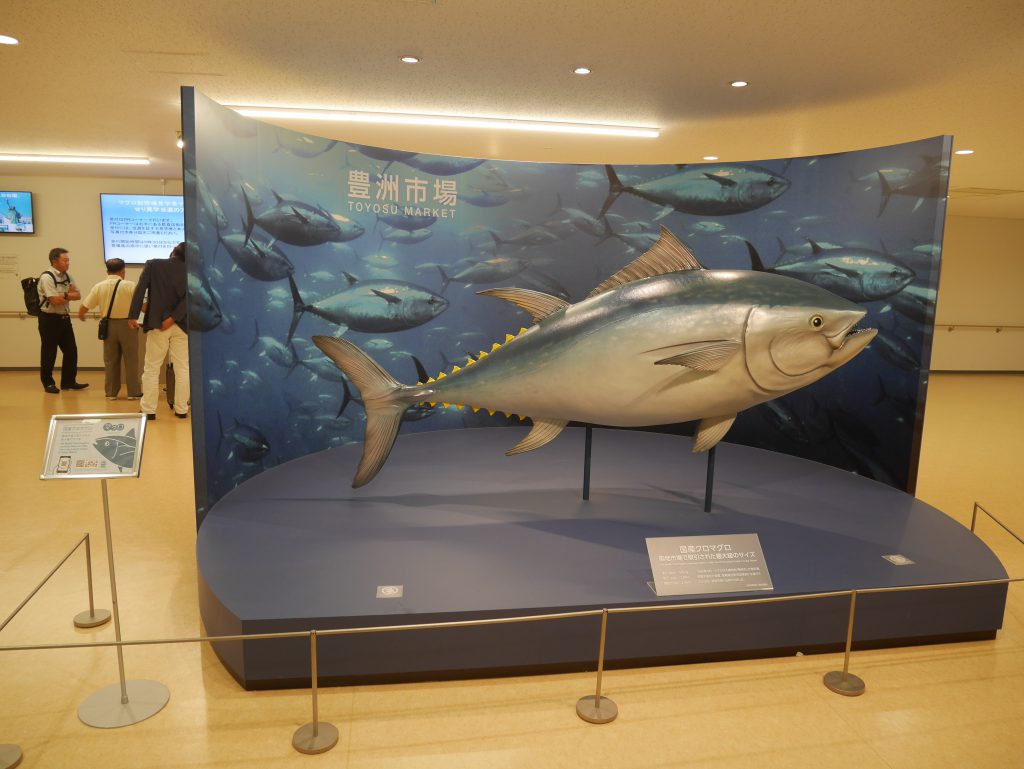
As One Era Ends, a New One Begins
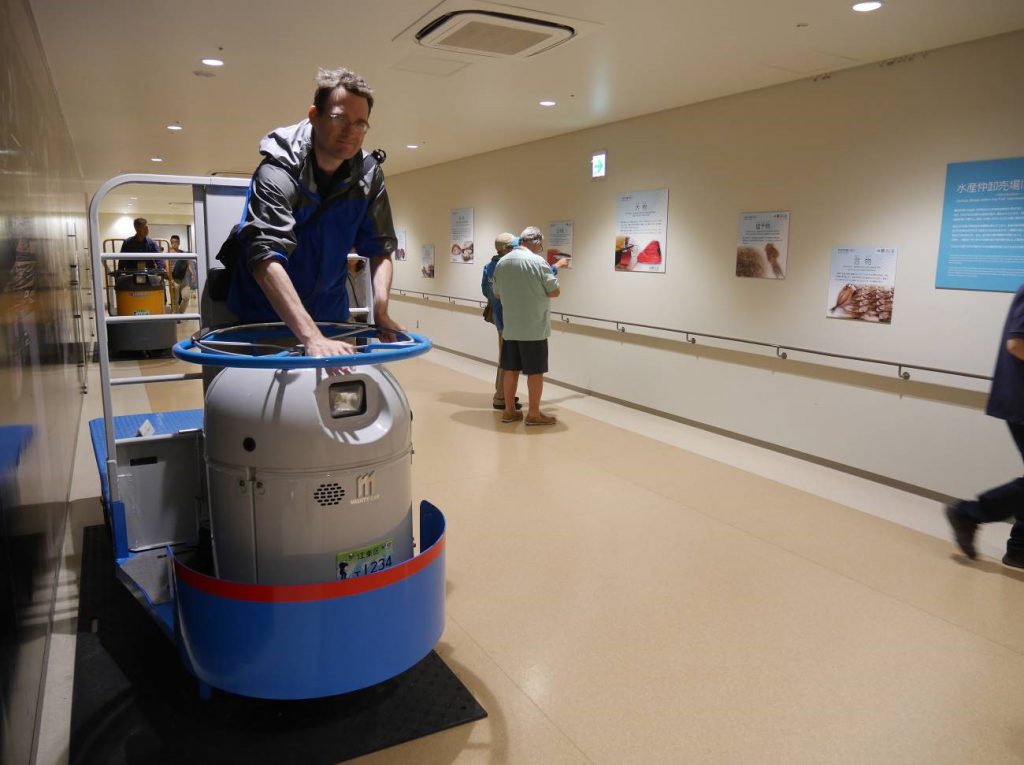
It’s no secret that the decision to relocate the world’s largest fish market from Tsukiji to Toyosu was a controversial one, with the most common complaint being the loss of history associated with the original location. However, after experiencing the inner workings of the new market first hand, I share Tsuchida’s thoughts: the character and spirit of Tsukiji continues in Toyosu.
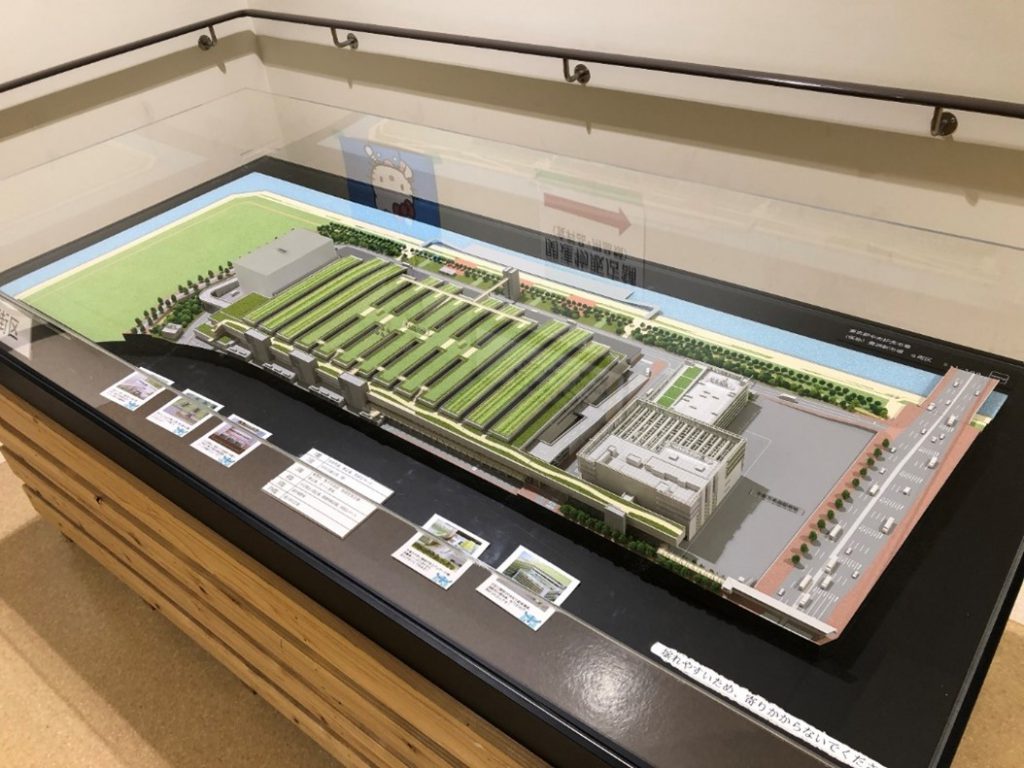
Additionally, when you consider the massive redevelopment projects that the market is bringing to the Toyosu area, it’s only a matter of time before visitors and the public regard the new Toyosu Market as fondly as its predecessor.

